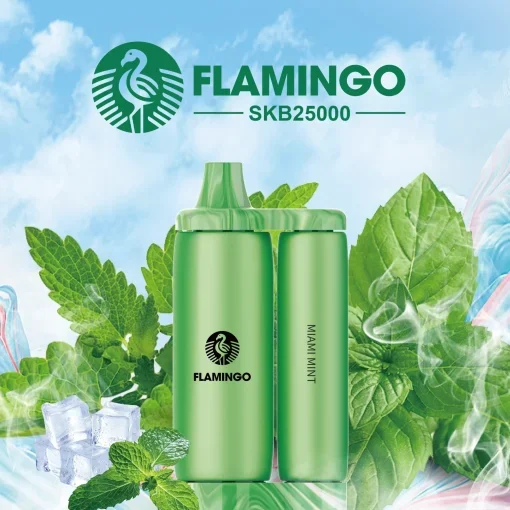Are Vape Shops Profitable? A Comprehensive Analysis of the Industry
The vaping industry has surged in popularity over the last decade, transforming from an obscure hobby into a multi-billion-dollar market. So, this leads us to a pressing question for budding entrepreneurs: Are vape shops profitable? In this article, we’ll explore various factors that influence the profitability of vape shops, including market trends, location, initial investment, and operational considerations. We’ll also delve into business strategies that can maximize profits in this lucrative industry.
The Current Landscape of the Vaping Industry
According to estimates by Statista, the global vaping market was valued at approximately $15 billion in 2020 and is projected to continue its growth trajectory. The rising adoption of e-cigarettes as an alternative to conventional smoking is driving this expansion. Consumers are increasingly turning to vape products due to their variety of flavors, customizable experiences, and perceived health benefits. Understanding this landscape is crucial for anyone considering entering the market.
Initial Investment and Costs
When starting a vape shop, potential owners must consider the initial investment and ongoing operational costs. From a startup perspective, creating a vape shop can range from $20,000 to upwards of $50,000. Here’s a breakdown of the costs involved:
- Location: Rent or lease expenses can vary widely depending on the store's square footage and location. Prime locations typically have higher rent but can attract more foot traffic.
- Inventory: Stocking your shop with a variety of vape products, including devices, e-liquids, and accessories, can consume a significant part of your budget. A diverse inventory can draw in more customers.
- Licensing and Permits: Operating a vape shop typically requires a retail tobacco license and may also require additional local permits.
- Marketing: Setting aside funds for marketing, both online and offline, is crucial in generating awareness and attracting customers to your shop.
Location: The Key to Attracting Customers
Choosing the right location is perhaps the most critical factor determining the profitability of a vape shop. High foot traffic areas, such as shopping districts or near colleges, can significantly increase customer visits. However, it’s essential to balance rent costs with the potential customer base.
Conducting market research to assess local demographics, competitors, and consumption trends will provide insights into the best locations for a vape shop. Moreover, being situated near complementary businesses—like cafes or convenience stores—can help in attracting clientele who may not have originally planned to visit your shop.
Operational Considerations
Effective management of operational expenses can make or break the profitability of a vape shop. Here are some critical operational considerations:
- Staffing: Hiring knowledgeable and friendly staff is vital. Employees should ideally have experience with vaping products and be able to provide quality customer service.
- Inventory Management: Efficient inventory management can prevent overstocking or stockouts, both of which can harm profitability. Employ inventory management software to streamline these processes.
- Online Presence: With more consumers shopping online, establishing a digital footprint through an e-commerce platform can expand your customer base beyond local walk-ins.
Promotional Strategies to Boost Sales
Attracting customers to your vape shop requires creative promotional strategies that appeal to your target market. Here are some effective marketing techniques:
- Social Media Marketing: Leverage platforms like Instagram and Facebook to showcase new products, run contests, and engage with customers.
- In-Store Events: Hosting events such as vape tastings or educational workshops can create a community atmosphere and foster customer loyalty.
- Loyalty Programs: Implementing a reward program for returning customers can incentivize repeat business and increase overall sales.
- Content Marketing: Creating informative blog posts, tutorials, and reviews about vaping can help establish your shop as a trusted source in the community.
Regulatory Challenges and Compliance
One significant challenge in the vaping industry is navigating the complex set of regulations governing the sale of vape products. Depending on your location, laws regarding age restrictions, advertising limitations, and health warnings can impact how you run your business.
Staying informed of local regulations and ensuring compliance can avert potential fines and legal issues that could jeopardize your shop's profitability. Investing in legal counsel or consulting with industry experts may prove beneficial in this regard.
Future Trends and Adaptation
To maintain profitability, vape shops must stay ahead of market trends and adapt their business models accordingly. Emerging trends like the rise of CBD-infused vape products, sustainable practices, and the growing popularity of disposable vapes can offer new opportunities for growth.
Moreover, educating yourselves and your staff on the latest innovations in vaping technology and product offerings can set your shop apart from competitors, enhancing customer satisfaction and loyalty.
Conclusion
As the vaping industry continues to evolve, savvy entrepreneurs can find substantial profit potential in the vape shop business. With careful planning, effective management, and responsive marketing strategies, vape shops can thrive in a competitive marketplace. Achieving success requires not only understanding the fundamentals of running a retail business but also a willingness to adapt to changing consumer preferences and market dynamics.





